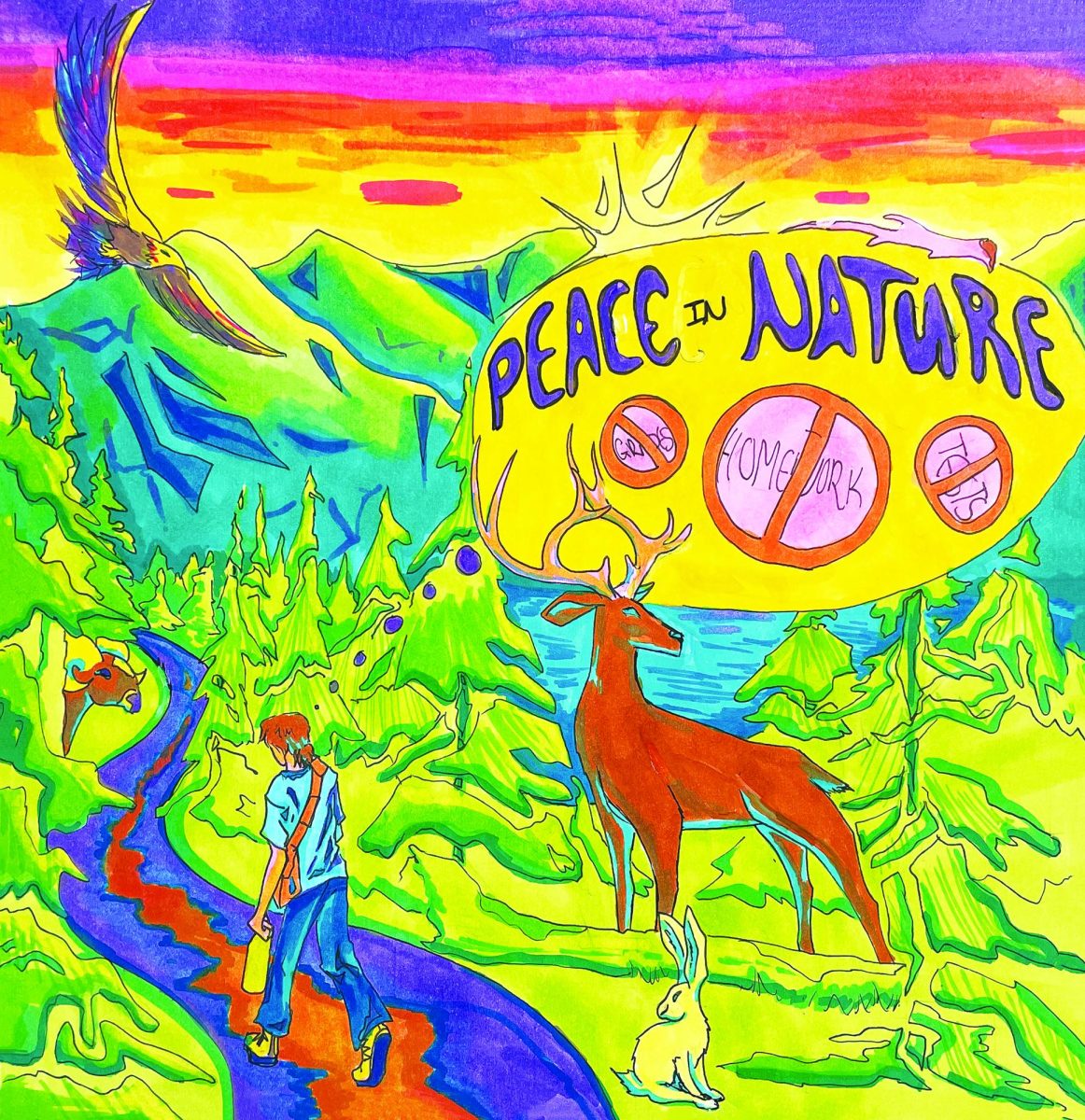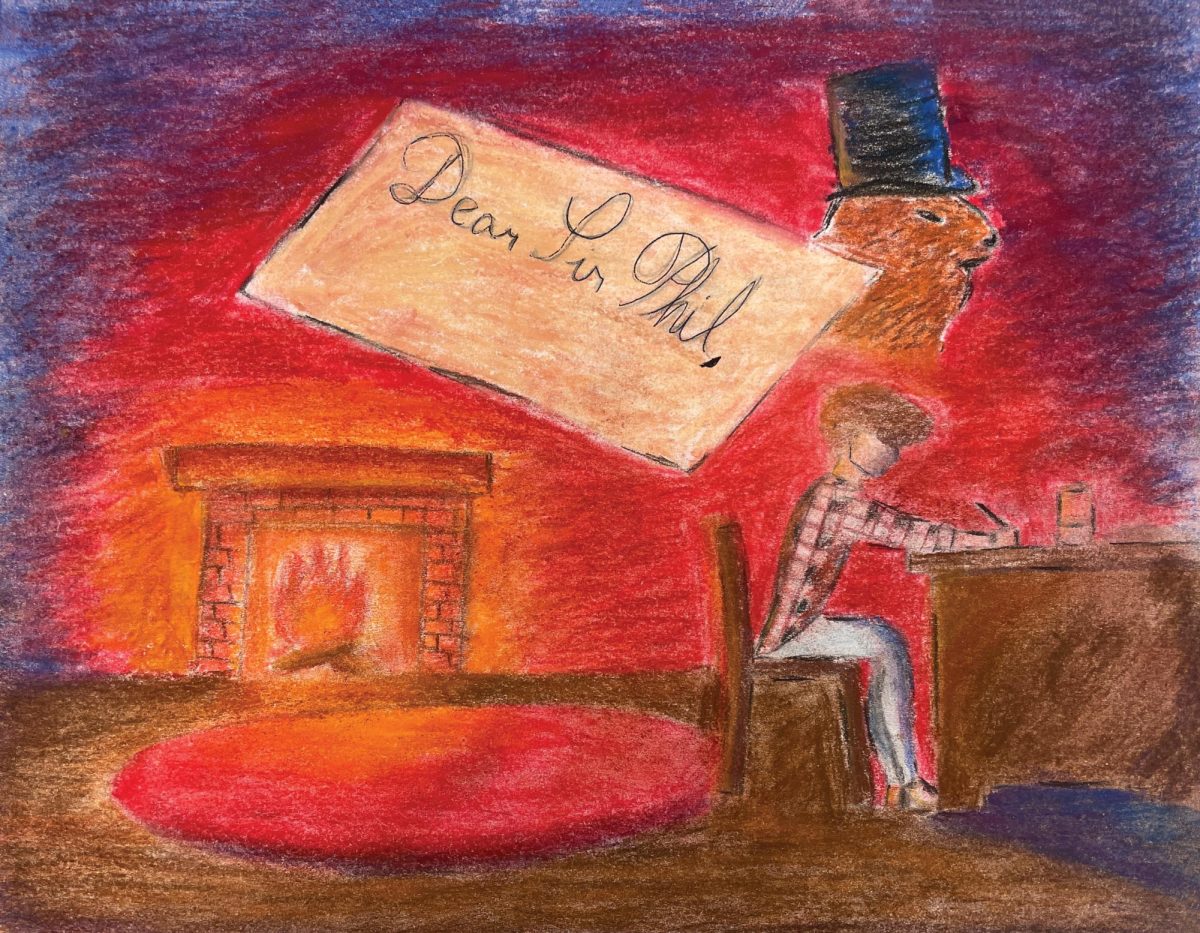By taking time to walk around a local park or simply sitting outside to do homework, the exposure to fresh air can be highly beneficial to reducing stress and improving health.
In today’s world it can be very difficult to escape feeling overworked, pressured or worn out with the numerous responsibilities put onto people.
Many look to forms of relaxation such as video games, music or watching a good movie. These are not bad ways to de-stress, they can be helpful in the short-term future.
With that being said, there is a much easier and sustainable way to escape stress: go outside and be a part of nature.
Stressors can cause people to experience depression, anxiety, etc.
Going outside has been proven time and time again that it can benefit humans in all aspects of health.
According to the American Psychological Association (APA), scientists did a study involving around 20,000 United Kingdom residents.
The scientists found people who had spent at least two recreational hours in nature during the previous week reported significantly greater health and well-being.
More specifically, according to the Yale School of the Environment, time in nature has proven to potentially “lower blood pressure and stress hormone levels, reduce nervous system arousal, enhance immune system function, increase self-esteem, reduce anxiety and improve mood.”
These health impacts have been proven to be so beneficial for people that incorporating time in nature has been promoted within educational institutions.
For example, in traditional Scandinavian culture, many children attend “forest schools.”
These schools, often for young children, promote developing academic and social skills in the spacious, natural environment.
In an interview with France24, Swedish preschool teacher Lisa Bystrom said that students engage in their natural environment, such as using “pieces of wood to show [children] that you can use anything you find in nature to do math.”
Students also spend time exploring their environment, helping them to develop a respect for the natural world.
In the same article, teacher Andreas Pegado of the same Swedish preschool said that “technology today takes over most (things), so I think it’s necessary to be in nature from a young age to learn how to behave and to respect nature.”
A study conducted in Denmark, as cited in the APA, to determine the correlation between access to nature and mental health, supports the importance of access to nature, just as forest schools attempt to do.
After following over 900,000 residents of Denmark, researchers found that children that grew up in neighborhoods with substantial green space had a “reduced risk of many psychiatric disorders later in life, including depression, mood disorders, schizophrenia, eating disorders and substance use disorder.” Those with low green space during their childhood also had a 55% higher chance of developing mental illness than children that grew up with abundant green space.
With schools focusing on spending time outdoors, it is also important for families to implement it. Many people can relate to memories of their parents limiting their screen time, marking how long they go outside or pushing them to do outside activities.
While this may have been annoying as a young kid, parents were on to something very serious.
According to Harvard Health, “We need sun exposure to make vitamin D, a vitamin that plays a crucial role in many body processes, from bone development to our immune system. Sun exposure also plays a role in our immune system in other ways, as well as in healthy sleep — and in our mood.”
Spending time outdoors and being around greenery is also good for a society as a whole.
According to the U.S. Forest Service, “Cleaning and greening has also been shown to reduce overall neighborhood crime by 13% and reduce nearby residents’ feelings of depression by 41%.”
Building H is one company that is attempting to promote health through food, activity, transportation and much more.
According to Building H founder Steve Downs, he conducted a study and found that nearly one in five Americans spends less than 15 minutes a day outdoors.
There are countless benefits from spending time outdoors, so why is there a lack of exercise and time spent outdoors in the U.S.?
A common factor of somebody not spending time outdoors is the lack of motivation or lack of greenery near where they live. A simple solution can be to plant trees and plants, go to a local park or plan visits to locations with lots of nature.
According to the U.S. Forest Service, there are links to increased health and where they live.
“Since scientists have gained access to data sets, sometimes capturing an entire country’s population of medical records and hospital data, we are finding that patient diagnoses and chronic illness risk are often related to where an individual lives and their proximity to green spaces,” said [social scientist Michelle] Kondo, “and that’s a correlation that is likely to strengthen as we conduct more studies.”
If you are reading this and find it difficult to go outdoors, there are several things you can do to have your own time in the sunlight.
Pennsylvania is home to countless beautiful, local trails that you can hike, bike or view.
The Schuylkill River Trail is a very well known trail that spans almost 120 miles and is about a 20-minute drive from the high school.
If going to other places is inconvenient or something you do not have time for, simply going out in your yard for half an hour to an hour a day can create significant changes in your life. If you are stressed about a test or situation you are involved in, find time to go out in nature.
Nature can help deal with stress, but it can also be a way to look around at life. As time and seasons go through their cycles, so will you. Winter may be cold, dry and dreary, but spring follows with a wave of warmth and sun.
As spring follows winter, solutions may follow all of your problems and in the end everything will be okay.






